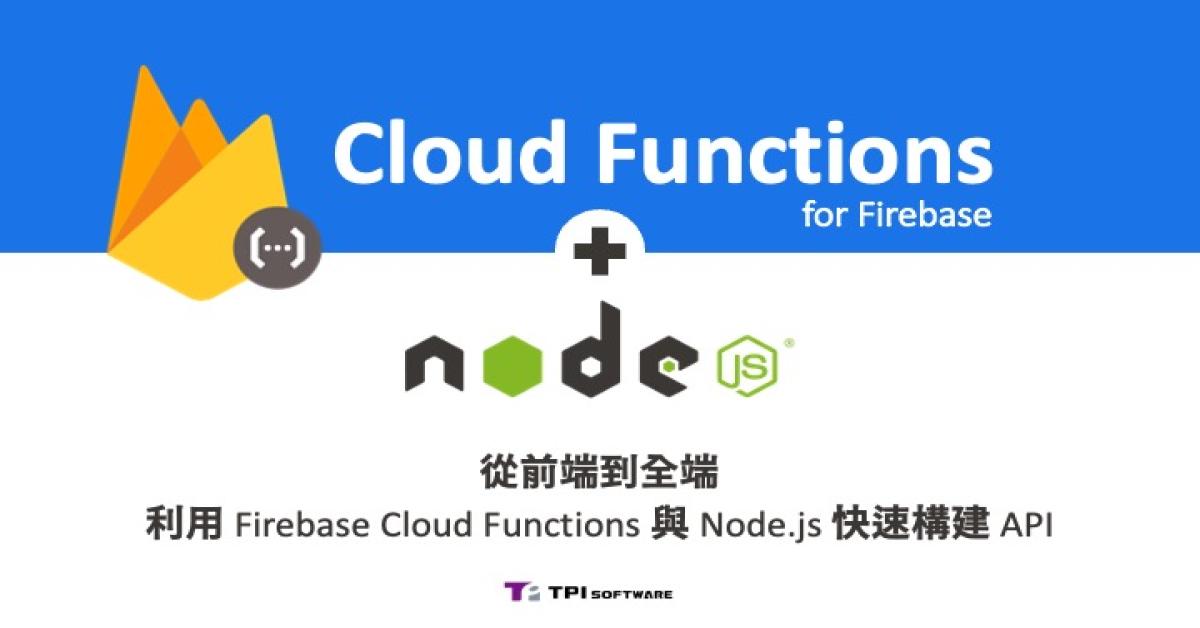angular
javascript
Cytoscape.js 搜尋、事件 與 Layout 擴充
2020/10/27 12:54:02
1
2757
Cytoscape.js 搜尋、事件 與 Layout 擴充
上一篇介紹了 Cytoscape.js 的基本操作,接下來介紹如何查詢 node 內容及事件和 layout 擴充方式。
尋找元素
cy.getElementById()
依照 Id 取得 Node 或 Edge
cy.add([
{ group: 'nodes', data: { id: 'n0' }, position: { x: 100, y: 100 } },
{ group: 'nodes', data: { id: 'n1' }, position: { x: 200, y: 200 } },
{ group: 'edges', data: { id: 'e0', source: 'n0', target: 'n1' } }
]);
cy.getElementById('n0');
cy.$id('n0'); // 簡寫
cy.$() et al
依照 selector 取得元素集合,selector 的使用方式類似於 jQuery,詳細 selector 說明可參考這裡
cy.nodes('[weight > 50]'); // 找出寬度大於 50 的 node
cy.edges('[source = "n0"]'); // 找出 source 等於 n0 的 edge
cy.elements('[weight > 50]'); // 不分 node 與 edge,找出寬度大於 50 的 elements
cy.filter('[weight > 50]'); // 與上一行相同
cy.filter(function(element, i){
return element.isNode() && element.data('weight') > 50; // 可使用 function 方式進行更精確的查詢
});
事件
cy.on()
建立事件
cy.on('tap', 'node', function(evt){
var node = evt.target;
console.log( 'tapped ' + node.id() );
});
// 或
cy.nodes().on('click', (e) => {
const t = e.target as cytoscape.CollectionReturnValue;
console.log(t.id());
console.log(t.data());
cy.removeListener()
移除事件
cy.on('tap', function(){ /* ... */ });
cy.removeListener('tap'); // remove all tap listener handlers, including the one above
// 或
cy.nodes().removeListener('click');
Layout 擴充
Cytoscape.js 的 layout 為設置 node 與 edge 佈局,未設定情況下所有圖形物件都是由畫布左上角作為起始位置繪製,除非有自行操作圖形物件的 XY 座標位置的需求,不然通常都會設定 layout 屬性作為繪圖基底布局會比較方便,Cytoscape 除基礎的 layout 也支援第三方 layout 擴充,讓資料顯示上更為豐富,下列使用其中一個 layout 擴充套件 klay 進行示範。
套件安裝
npm install cytoscape-klay
引用與註冊
app.component.ts
import cytoscape from 'cytoscape';
import klay from 'cytoscape-klay';
ngOnInit(): void {
cytoscape.use(klay);
}
配置 CommonJS 相依性
angular.json
"build": {
"builder": "@angular-devkit/build-angular:browser",
"options": {
"allowedCommonJsDependencies": [
"cytoscape",
"cytoscape-klay"
]
...
}
...
},
layout 選項設定
app.component.ts
var options = {
nodeDimensionsIncludeLabels: false, // Boolean which changes whether label dimensions are included when calculating node dimensions
fit: true, // Whether to fit
padding: 20, // Padding on fit
animate: false, // Whether to transition the node positions
animateFilter: function( node, i ){ return true; }, // Whether to animate specific nodes when animation is on; non-animated nodes immediately go to their final positions
animationDuration: 500, // Duration of animation in ms if enabled
animationEasing: undefined, // Easing of animation if enabled
transform: function( node, pos ){ return pos; }, // A function that applies a transform to the final node position
ready: undefined, // Callback on layoutready
stop: undefined, // Callback on layoutstop
klay: {
// Following descriptions taken from http://layout.rtsys.informatik.uni-kiel.de:9444/Providedlayout.html?algorithm=de.cau.cs.kieler.klay.layered
addUnnecessaryBendpoints: false, // Adds bend points even if an edge does not change direction.
aspectRatio: 1.6, // The aimed aspect ratio of the drawing, that is the quotient of width by height
borderSpacing: 20, // Minimal amount of space to be left to the border
compactComponents: false, // Tries to further compact components (disconnected sub-graphs).
crossingMinimization: 'LAYER_SWEEP', // Strategy for crossing minimization.
/* LAYER_SWEEP The layer sweep algorithm iterates multiple times over the layers, trying to find node orderings that minimize the number of crossings. The algorithm uses randomization to increase the odds of finding a good result. To improve its results, consider increasing the Thoroughness option, which influences the number of iterations done. The Randomization seed also influences results.
INTERACTIVE Orders the nodes of each layer by comparing their positions before the layout algorithm was started. The idea is that the relative order of nodes as it was before layout was applied is not changed. This of course requires valid positions for all nodes to have been set on the input graph before calling the layout algorithm. The interactive layer sweep algorithm uses the Interactive Reference Point option to determine which reference point of nodes are used to compare positions. */
cycleBreaking: 'GREEDY', // Strategy for cycle breaking. Cycle breaking looks for cycles in the graph and determines which edges to reverse to break the cycles. Reversed edges will end up pointing to the opposite direction of regular edges (that is, reversed edges will point left if edges usually point right).
/* GREEDY This algorithm reverses edges greedily. The algorithm tries to avoid edges that have the Priority property set.
INTERACTIVE The interactive algorithm tries to reverse edges that already pointed leftwards in the input graph. This requires node and port coordinates to have been set to sensible values.*/
direction: 'UNDEFINED', // Overall direction of edges: horizontal (right / left) or vertical (down / up)
/* UNDEFINED, RIGHT, LEFT, DOWN, UP */
edgeRouting: 'ORTHOGONAL', // Defines how edges are routed (POLYLINE, ORTHOGONAL, SPLINES)
edgeSpacingFactor: 0.5, // Factor by which the object spacing is multiplied to arrive at the minimal spacing between edges.
feedbackEdges: false, // Whether feedback edges should be highlighted by routing around the nodes.
fixedAlignment: 'NONE', // Tells the BK node placer to use a certain alignment instead of taking the optimal result. This option should usually be left alone.
/* NONE Chooses the smallest layout from the four possible candidates.
LEFTUP Chooses the left-up candidate from the four possible candidates.
RIGHTUP Chooses the right-up candidate from the four possible candidates.
LEFTDOWN Chooses the left-down candidate from the four possible candidates.
RIGHTDOWN Chooses the right-down candidate from the four possible candidates.
BALANCED Creates a balanced layout from the four possible candidates. */
inLayerSpacingFactor: 1.0, // Factor by which the usual spacing is multiplied to determine the in-layer spacing between objects.
layoutHierarchy: false, // Whether the selected layouter should consider the full hierarchy
linearSegmentsDeflectionDampening: 0.3, // Dampens the movement of nodes to keep the diagram from getting too large.
mergeEdges: false, // Edges that have no ports are merged so they touch the connected nodes at the same points.
mergeHierarchyCrossingEdges: true, // If hierarchical layout is active, hierarchy-crossing edges use as few hierarchical ports as possible.
nodeLayering:'NETWORK_SIMPLEX', // Strategy for node layering.
/* NETWORK_SIMPLEX This algorithm tries to minimize the length of edges. This is the most computationally intensive algorithm. The number of iterations after which it aborts if it hasn't found a result yet can be set with the Maximal Iterations option.
LONGEST_PATH A very simple algorithm that distributes nodes along their longest path to a sink node.
INTERACTIVE Distributes the nodes into layers by comparing their positions before the layout algorithm was started. The idea is that the relative horizontal order of nodes as it was before layout was applied is not changed. This of course requires valid positions for all nodes to have been set on the input graph before calling the layout algorithm. The interactive node layering algorithm uses the Interactive Reference Point option to determine which reference point of nodes are used to compare positions. */
nodePlacement:'BRANDES_KOEPF', // Strategy for Node Placement
/* BRANDES_KOEPF Minimizes the number of edge bends at the expense of diagram size: diagrams drawn with this algorithm are usually higher than diagrams drawn with other algorithms.
LINEAR_SEGMENTS Computes a balanced placement.
INTERACTIVE Tries to keep the preset y coordinates of nodes from the original layout. For dummy nodes, a guess is made to infer their coordinates. Requires the other interactive phase implementations to have run as well.
SIMPLE Minimizes the area at the expense of... well, pretty much everything else. */
randomizationSeed: 1, // Seed used for pseudo-random number generators to control the layout algorithm; 0 means a new seed is generated
routeSelfLoopInside: false, // Whether a self-loop is routed around or inside its node.
separateConnectedComponents: true, // Whether each connected component should be processed separately
spacing: 20, // Overall setting for the minimal amount of space to be left between objects
thoroughness: 7 // How much effort should be spent to produce a nice layout..
},
priority: function( edge ){ return null; }, // Edges with a non-nil value are skipped when greedy edge cycle breaking is enabled
};
套用 layout 設定
cy.layout( options ).run();
套用結果

- 以非同步方式取得資料,需在 callback 內完成加入 element 後再執行 layout.run(),否則 layout 設定會無效,例如
this.initData().subscribe(neo4jData => {
this.addElement(neo4jData);
this.cy.layout(this.layoutOptions).run();
});
錯誤示範
this.initData().subscribe(neo4jData => {
this.addElement(neo4jData);
});
this.cy.layout(this.layoutOptions).run();
- node 或 edge 新增/刪除的異動後要呼叫 layout.run() 重新排列位置
完整範例
app.component.ts
import { Component, OnInit } from '@angular/core';
import * as cytoscape from 'cytoscape';
import klay from 'cytoscape-klay';
import { HttpClient, HttpHeaders } from '@angular/common/http';
@Component({
selector: 'app-root',
templateUrl: './app.component.html',
styleUrls: ['./app.component.scss']
})
export class AppComponent implements OnInit {
cy: cytoscape.Core;
layoutOptions = {
name: 'klay',
nodeDimensionsIncludeLabels: false, // Boolean which changes whether label dimensions are included when calculating node dimensions
fit: true, // Whether to fit
padding: 10, // Padding on fit
animate: false, // Whether to transition the node positions
animateFilter: function (node, i) { return true; }, // Whether to animate specific nodes when animation is on; non-animated nodes immediately go to their final positions
animationDuration: 500, // Duration of animation in ms if enabled
animationEasing: undefined, // Easing of animation if enabled
transform: function (node, pos) { return pos; }, // A function that applies a transform to the final node position
ready: undefined, // Callback on layoutready
stop: undefined, // Callback on layoutstop
klay: {
// Following descriptions taken from http://layout.rtsys.informatik.uni-kiel.de:9444/Providedlayout.html?algorithm=de.cau.cs.kieler.klay.layered
addUnnecessaryBendpoints: false, // Adds bend points even if an edge does not change direction.
aspectRatio: 1.6, // The aimed aspect ratio of the drawing, that is the quotient of width by height
borderSpacing: 20, // Minimal amount of space to be left to the border
compactComponents: false, // Tries to further compact components (disconnected sub-graphs).
crossingMinimization: 'LAYER_SWEEP', // Strategy for crossing minimization.
/* LAYER_SWEEP The layer sweep algorithm iterates multiple times over the layers, trying to find node orderings that minimize the number of crossings. The algorithm uses randomization to increase the odds of finding a good result. To improve its results, consider increasing the Thoroughness option, which influences the number of iterations done. The Randomization seed also influences results.
INTERACTIVE Orders the nodes of each layer by comparing their positions before the layout algorithm was started. The idea is that the relative order of nodes as it was before layout was applied is not changed. This of course requires valid positions for all nodes to have been set on the input graph before calling the layout algorithm. The interactive layer sweep algorithm uses the Interactive Reference Point option to determine which reference point of nodes are used to compare positions. */
cycleBreaking: 'GREEDY', // Strategy for cycle breaking. Cycle breaking looks for cycles in the graph and determines which edges to reverse to break the cycles. Reversed edges will end up pointing to the opposite direction of regular edges (that is, reversed edges will point left if edges usually point right).
/* GREEDY This algorithm reverses edges greedily. The algorithm tries to avoid edges that have the Priority property set.
INTERACTIVE The interactive algorithm tries to reverse edges that already pointed leftwards in the input graph. This requires node and port coordinates to have been set to sensible values.*/
direction: 'UNDEFINED', // Overall direction of edges: horizontal (right / left) or vertical (down / up)
/* UNDEFINED, RIGHT, LEFT, DOWN, UP */
edgeRouting: 'ORTHOGONAL', // Defines how edges are routed (POLYLINE, ORTHOGONAL, SPLINES)
edgeSpacingFactor: 0.5, // Factor by which the object spacing is multiplied to arrive at the minimal spacing between edges.
feedbackEdges: false, // Whether feedback edges should be highlighted by routing around the nodes.
fixedAlignment: 'NONE', // Tells the BK node placer to use a certain alignment instead of taking the optimal result. This option should usually be left alone.
/* NONE Chooses the smallest layout from the four possible candidates.
LEFTUP Chooses the left-up candidate from the four possible candidates.
RIGHTUP Chooses the right-up candidate from the four possible candidates.
LEFTDOWN Chooses the left-down candidate from the four possible candidates.
RIGHTDOWN Chooses the right-down candidate from the four possible candidates.
BALANCED Creates a balanced layout from the four possible candidates. */
inLayerSpacingFactor: 1.0, // Factor by which the usual spacing is multiplied to determine the in-layer spacing between objects.
layoutHierarchy: false, // Whether the selected layouter should consider the full hierarchy
linearSegmentsDeflectionDampening: 0.3, // Dampens the movement of nodes to keep the diagram from getting too large.
mergeEdges: false, // Edges that have no ports are merged so they touch the connected nodes at the same points.
mergeHierarchyCrossingEdges: true, // If hierarchical layout is active, hierarchy-crossing edges use as few hierarchical ports as possible.
nodeLayering: 'NETWORK_SIMPLEX', // Strategy for node layering.
/* NETWORK_SIMPLEX This algorithm tries to minimize the length of edges. This is the most computationally intensive algorithm. The number of iterations after which it aborts if it hasn't found a result yet can be set with the Maximal Iterations option.
LONGEST_PATH A very simple algorithm that distributes nodes along their longest path to a sink node.
INTERACTIVE Distributes the nodes into layers by comparing their positions before the layout algorithm was started. The idea is that the relative horizontal order of nodes as it was before layout was applied is not changed. This of course requires valid positions for all nodes to have been set on the input graph before calling the layout algorithm. The interactive node layering algorithm uses the Interactive Reference Point option to determine which reference point of nodes are used to compare positions. */
nodePlacement: 'BRANDES_KOEPF', // Strategy for Node Placement
/* BRANDES_KOEPF Minimizes the number of edge bends at the expense of diagram size: diagrams drawn with this algorithm are usually higher than diagrams drawn with other algorithms.
LINEAR_SEGMENTS Computes a balanced placement.
INTERACTIVE Tries to keep the preset y coordinates of nodes from the original layout. For dummy nodes, a guess is made to infer their coordinates. Requires the other interactive phase implementations to have run as well.
SIMPLE Minimizes the area at the expense of... well, pretty much everything else. */
randomizationSeed: 1, // Seed used for pseudo-random number generators to control the layout algorithm; 0 means a new seed is generated
routeSelfLoopInside: false, // Whether a self-loop is routed around or inside its node.
separateConnectedComponents: true, // Whether each connected component should be processed separately
spacing: 100, // Overall setting for the minimal amount of space to be left between objects
thoroughness: 7 // How much effort should be spent to produce a nice layout..
},
priority: function (edge) { return null; }, // Edges with a non-nil value are skipped when greedy edge cycle breaking is enabled
} as cytoscape.LayoutOptions;
constructor(
private http: HttpClient
) { }
ngOnInit(): void {
cytoscape.use(klay);
this.cy = cytoscape({
container: document.getElementById('cy')
style: [
{
selector: 'node',
css: {
// 圖形,可直接設定圖形類型,例如 rectangle,或動態從 data 物件下取得指定屬性,如下
shape: 'data(shape)' as NodeShape,
label: 'data(customerId)', // 文字標籤
'text-valign': 'top', // 文字標籤位置
'text-halign': 'center', // 文字標籤位置
'font-size': '6px',
width: 20,
height: 20
}
},
{
selector: 'edge',
css: {
'curve-style': 'bezier', // edge 類型
'target-arrow-shape': 'triangle', // edge 箭頭圖形
width: 3, // 寬度
label: 'data(label)', // 文字標籤,
'font-size': '6px',
'text-wrap': 'wrap'
}
},
],
});
this.initData().subscribe(neo4jData => {
this.addElement(neo4jData);
this.cy.layout(this.layoutOptions).run();
});
}
private initData(): Observable<any> {
// cypher 語法
const query = 'match p=(m)-[r*5]-(n) return p limit 3';
const body = {
statements: [{
statement: query,
resultDataContents: ['row', 'graph']
}]
};
return this.http.post(`http://neo4j位置/db/neo4j/tx/commit`, body, {
headers: new HttpHeaders().set('Authorization', 'Basic ' + btoa('帳號' + ':' + '密碼'))
});
}
private addElement(data:any){
/* 加入 node 與 edge */
}
}












